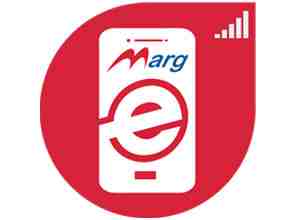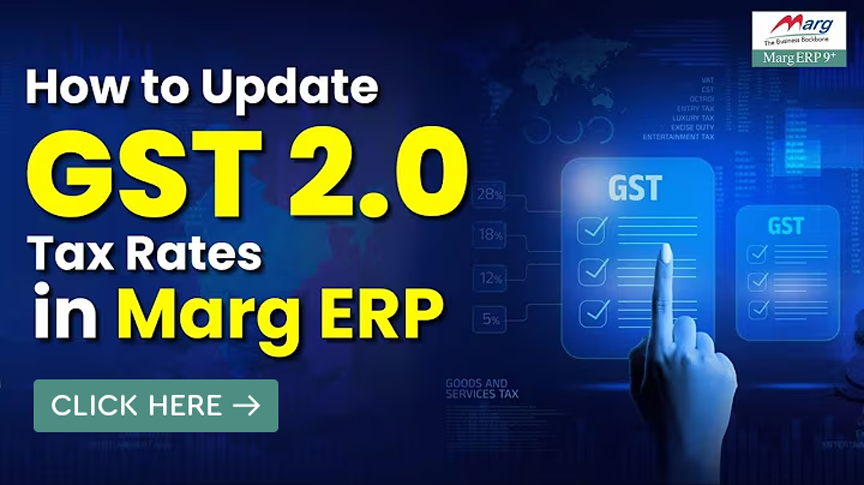Search by Category
- Marg Nano
- Swiggy & Zomato
- ABHA - Ayushman Bharat
- Marg Cloud
-
Masters
- Ledger Master
- Account Groups
- Inventory Master
- Rate and Discount Master
- Refresh Balances
- Cost Centre Master
- Opening Balances
- Master Statistics
- General Reminder
- Shortage Report
- Supplier Vs Company
- Temporary Limit
- Shop QRID and eBusiness
- Cloud Backup Setup
- Password and Powers
- Marg Licensing
- Marg Setup
- Target
- Budget
- Credit Limit Management
- Change ERP Edition
- Ease Of Gst Adoption
-
Transactions
- ERP To ERP Order
- Sale
- Purchase
- Sale Return
- Purchase Return
- Brk / Exp Receive
- Scrap Receive
- Brk / Exp Issue
- Scrap Issue
- GST Inward
- GST Outward
- Replacement Issue
- Replacement Receive
- Stock Issue
- Stock Receive
- Price Diff. Sale
- Price Diff. Purchase
- BOM
- Conversion
- Quotation
- Sale Order
- Purchase Order
- Dispatch Management
- ERP Bridger
- Transaction Import
- Download From Server
- Approvals
- Pendings
- Accounts
- Online Banking
-
Books
- Cash and Bank Book
- All Ledgers
- Entry Books
- Debtors Ledgers
- Creditors Ledger
- Purchase Register
- Sale Register
- Duties & Taxes
- Analytical Summaries
- Outstandings
- Collection Reports
- Depreciation
- T-Format Printing
- Multi Printing
- Bank Reconcilation
- Cheque Management
- Claims & Incentives
- Target Analysis
- Cost Centres
- Interest and Collection
- Final Reports
-
Stocks
- Current Stock
- Stock Analysis
- Filtered Stock
- Batch Stock
- Dump Stock
- Hold/Ban Stock
- Stock Valuation
- Minimum Level Stock
- Maximum Level Stock
- Expiry Stock
- Near Expiry Stock
- Stock Life Statement
- Batch Purchase Type
- Departments Reports
- Merge Report
- Stock Ageing Analysis
- Fast and Slow Moving Items
- Crate Reports
- Size Stock
-
Daily Reports
- Daily Working
- Fast SMS/E-Mail Reports
- Stock and Sale Analysis
- Order Calling
- Business on Google Map
- Sale Report
- Purchase Report
- Inventory Reports
- ABC Analysis
- All Accounting Reports
- Purchase Planning
- Dispatch Management Reports
- SQL Query Executor
- Transaction Analysis
- Claim Statement
- Upbhogkta Report
- Mandi Report
- Audit Trail
- Re-Order Management
- Reports
-
Reports Utilities
- Delete Special Deals
- Multi Deletion
- Multi Editing
- Merge Inventory Master
- Merge Accounts Master
- Edit Stock Balance
- Edit Outstanding
- Re-Posting
- Copy
- Batch Updation
- Structure/Junk Verificarion
- Data Import/Export
- Create History
- Voucher Numbering
- Group of Accounts
- Carry Balances
- Misc. Utilities
- Advance Utilities
- Shortcut Keys
- Exit
- Generals
- Backup
- Self Format
- GST Return
- Jewellery
- eBusiness
- Control Room
- Advance Features
- Registration
- Add On Features
- Queries
- Printing
- Networking
- Operators
- Garment
- Hot Keys
-
GST
- E-Invoicing
- Internal Audit
- Search GSTIN/PARTY
- Export Invoice Print
- Tax Clubbing
- Misc. GST Reports
- GST Self-Designed Reports
- GST Return Video
- GSTR Settings
- Auditors Details
- Update GST Patch
- Misc. GST Returns
- GST Register & Return
- GST RCM Statement
- GST Advance Statement
- GST Payment Statement
- Tax Registers and Summaries
- TDS/TCS Reports
- Form Iss./Receivable
- Mandi
- My QR Code
- E-Way Bill
- Marg pay
- Saloon Setup
- Restaurant
- Pharmanxt free Drugs
- Manufacturing
- Password and Power
- Digital Entry
Home > Margerp > Misc Gst Reports > Trans 1 process and overview in Marg
Trans 1 process and overview in Marg
GST Returns: TRAN-1 (HSN Wise Stock Statement) in Marg ERP
Introduction to GST TRAN-1 in Marg ERP
GST TRAN-1 Form Filing Due Date
Process to take the Stock Statement Report in Marg ERP
Overview of GST TRAN-1
GST TRAN-1 form is a transition form to be filed by the registered taxable person to claim/avail transitional credit i.e. their previous input tax credit accumulated from earlier purchased stock before the implementation of the GST. Also, in order to carry forward the Stock, Input VAT, Service Tax or Excise there is a requirement to file GST TRAN-1.
On the other hand, those businesses who have registered themselves under GST as composition dealer are not eligible to file GST TRAN 1
**One thing to be noted that GST in Kashmir was applicable on 8th July’ 2017. So, in TRAN-1, Kashmir must be presented till 7th July’2017.
Introduction to GST TRAN-1 in Marg ERP
Marg ERP has developed an option GST TRAN-1 through which the user can view the HSN wise stock statement and fill its details in TRAN-1 with the help of government portal.
GST TRAN-1 Form Filing Due Date
The due date for submission of original GST TRAN-1 is 27-12-2017 & Revision of already submitted GST TRAN-1 both is 27th Dec’ 2017. (Revision can be done only once)
Process to take the Stock Statement Report in Marg ERP
TRAN-1 means the user has to present the status of the closing stock till 30th June 2017 in TRAN- 1.
In order to take out the Stock Statement report the user will go to Final Reports>> to GST Register & Returns>>Select HSN-Wise Stock Statement.

Fig. 1.1 Menu View to GST Register & Returns in Marg ERP Software
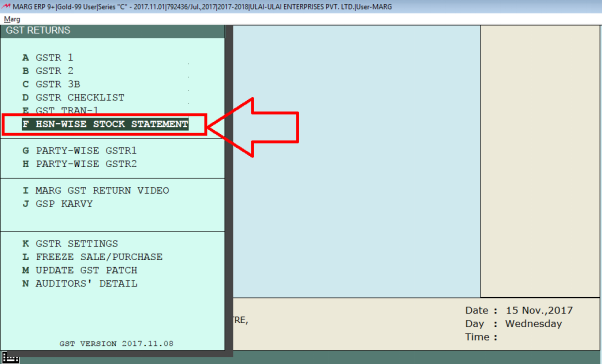
Fig. 1.2 View of GST Returns Window in Marg ERP Software
Then a HSN-WISE Stock Statement for TRAN-1 window will appear in which the user will set the following options:
Closing Stock on- Mention the Date like 30 - june-17
Related GSTR Period- Select that particular month here for which the user is filing GSTR (i.e. JULY)
Item Wise Details & Purchase Bill Details: If the user wants to see How many invoices are available or not so for then here the user will set as YES on both Item wise details and Purchase bill details
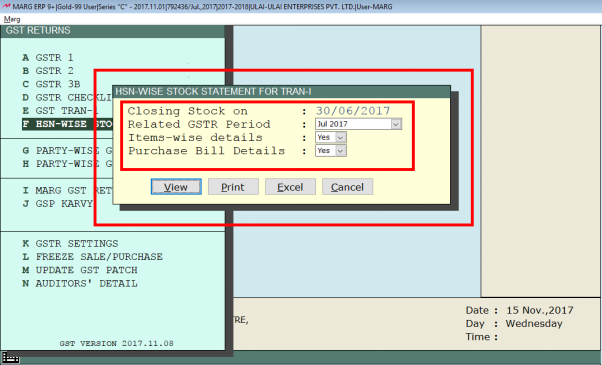
Fig. 1.3 View of HSN Wise Stock Statement for TRAN-1 window in Marg ERP Software
Then Click on Excel. The user can view that 2 excel files has been generated as shown below.
In the first Excel file the details will be shown of those invoices which are available and those invoices which are not available. Suppose there is a HSN code in the sheet i.e. 40051000 along with invoice no. & invoice date mentioned for the quantity which is being purchased from 1st April to 30th June 2017 against the Invoice No. (as shown below). So, in this way the user can view the availability of the total value of the invoices.
Also, the details of those invoices will be shown here which are not available i.e. the invoices of HSN 40029990 & 40051000 are not available.
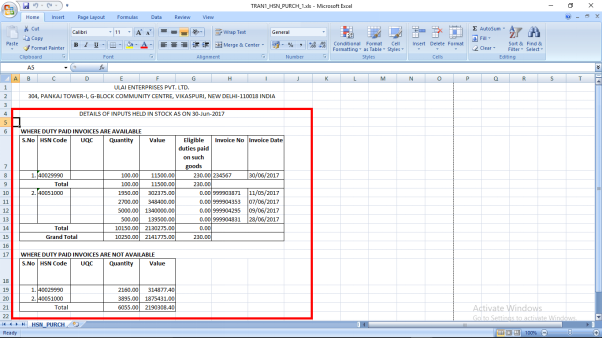
Fig. 1.4 View of details of invoices along with HSN Code in Marg ERP Software
In Second excel file, Item wise details will be shown here. Suppose there is a HSN Code and along with the items of those HSN. Also, the user can view the Closing Quantity & Stock Valuation till 30th June. So, in this way the user will able to get all bifurcated details here.
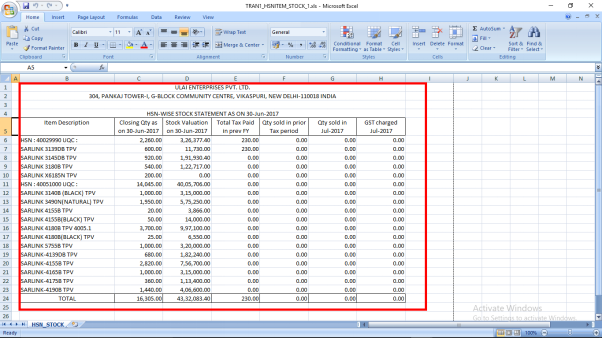
Fig. 1.5 View of Item wise details in Marg ERP Software
Now, the user needs to fill these values in TRAN 1 form. So, for that the user will login into gst.gov.in>>Then ENTER the User name, Password and the characters which is shown here.
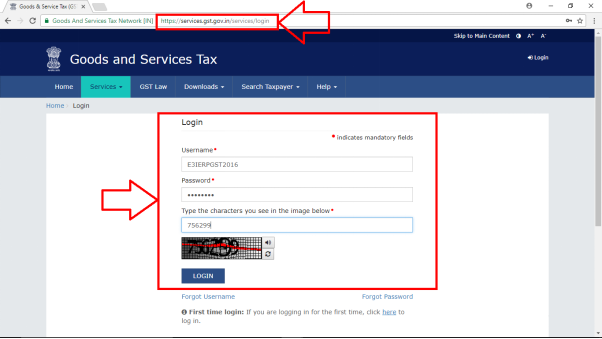
Fig. 1.6 Entering the Login Details in Government Portal
Firstly, let’s understand that who actually needs to fill TRAN 1. Those people who requires Transitional Credit need to file TRAN 1. Also, if the user needs to carry forward Stock or Input VAT, Service Tax, Excise, etc. are required to file TRAN 1.
And those people who are not registered in VAT, Service Tax, Excise or which are registered in July or afterwards are not required to fill TRAN 1.
Now, the user will go to Services>>Returns>>Transition Forms
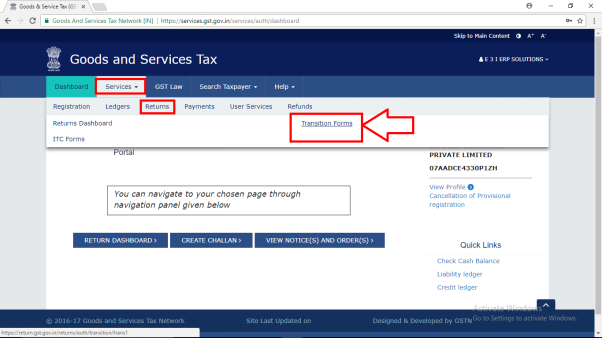
Fig. 1.7 Process to fill TRAN 1 in Government Portal
Then Click on “7 (a), 7 (b), 7(c), 7(d) – Details of the inputs held in stock” option. Here, the user needs to give the details of the stock which is kept on hold.

Fig. 1.8 Process to fill TRAN 1 in Government Portal
After clicking on this option, the user can view 4 different parts i.e. 7 (a), 7 (b), 7 (c) and 7 (d).
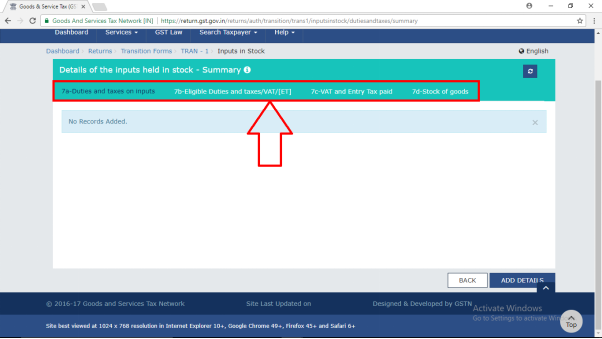
Fig. 1.9 Process to fill TRAN 1 in Government Portal
7 (a) Duties and Taxes on Inputs:
Click on “Add Details”.
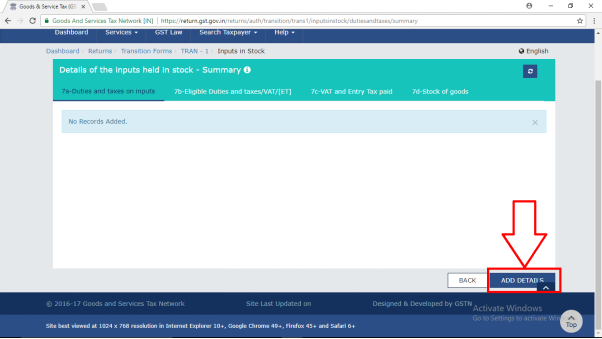
Fig. 1.10 Understanding 7 (a) Duties and Taxes on Inputs in Government Portal

Fig. 1.11 Understanding 7 (a) Duties and Taxes on Inputs in Government Portal
HSN (As Applicable): Any product which is being purchased by the user and needs the input tax credit of that particular product; for that the user will enter the HSN of that product.
Unit: The user will enter the Unit i.e. whether it is in Kilograms then enter KGS, for Bundle enter BDL, etc.
Qty. & Value: The user will enter the Qty. & Invoice Value.
Eligible Duties Paid on such Inputs: Suppose if any item is taxable in excise and if it is exempted or Tax Free in GST then mention the input tax credit here.
Where duty paid invoices are available: The user will select whether the duty invoices are available or not.
Type of Goods; The user will select the Type of Goods i.e. Inputs, Semi-Finished Goods & Finished Goods. From this, the user will get to know that the benefit can be availed only on stock and not on services.
So, in this way the user will fill all the details and save it.
7 (b) Eligible Duties and Taxes/VAT/[ET]:
Click on “Add Details”.
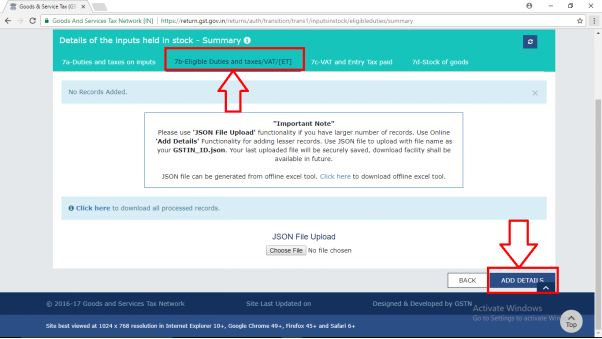
Fig. 1.12 Understanding 7 (b) Eligible Duties and Taxes/VAT/ [ET] in Government Portal
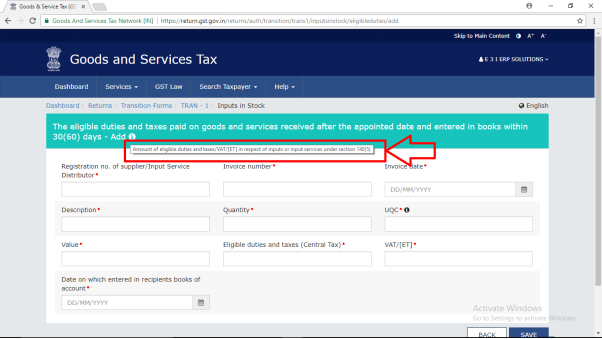
Fig. 1.13 Understanding 7 (b) Eligible Duties and Taxes/VAT/ [ET] in Government Portal
The user can view here Amount of eligible duties and taxes/VAT/ [ET] in respect of inputs or input services under section 140 (5): The Section 140 covers that case where the user has paid the tax in the old law and the service or goods which is being received to the user is after an appointed date then the user will get that credit also. So, the user will enter the
Registration no. of the supplier/Input Service Distributor then
Invoice No.
Invoice Date
Description
Quantity
UQC i.e. Unique Quantity Code
Value
Eligible Duties and Taxes i.e. Central Tax like Excise or Service Tax Amount will be mentioned/filled here
VAT/ [ET] i.e. The user will enter the amount of VAT or Entry Tax here.
Date on which entered in recipient books of account i.e. on which date the user has entered in book of accounts. If the user will not enter in books of accounts within 30 days then the user will not be eligible to get the credit of stock transit.
So, in this way the user will fill all the details and save it.
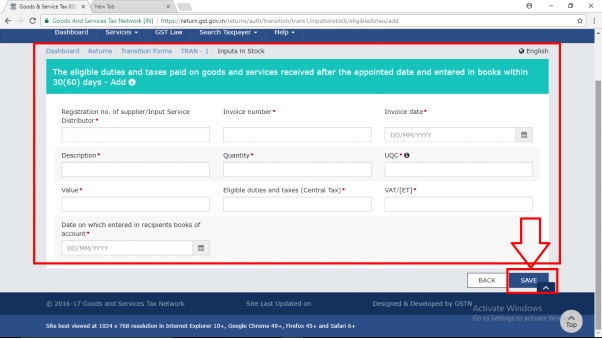
Fig. 1.14 Understanding 7 (b) Eligible Duties and Taxes/VAT/ [ET] in Government Portal
7 (c) VAT & Entry Tax Paid:
Click on “Add Details”.
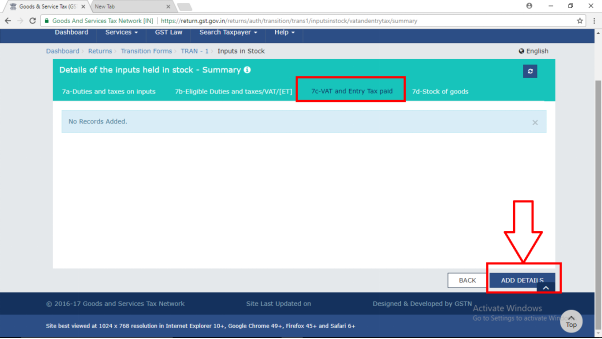
Fig. 1.15 Understanding 7 (c) VAT & Entry Tax Paid in Government Portal
Here the user needs to enter details of VAT and Entry Tax.
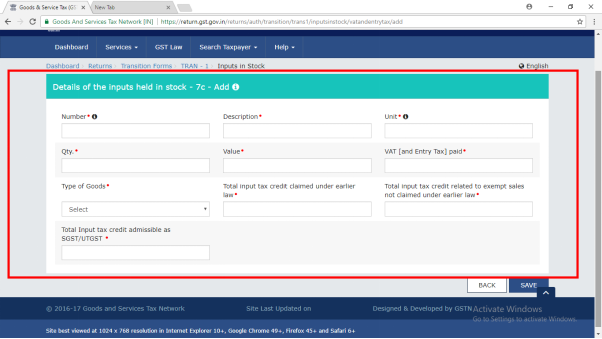
Fig. 1.16 Understanding 7 (c) VAT & Entry Tax Paid in Government Portal
7 (d) Stock of Goods:
Click on “Add Details”.
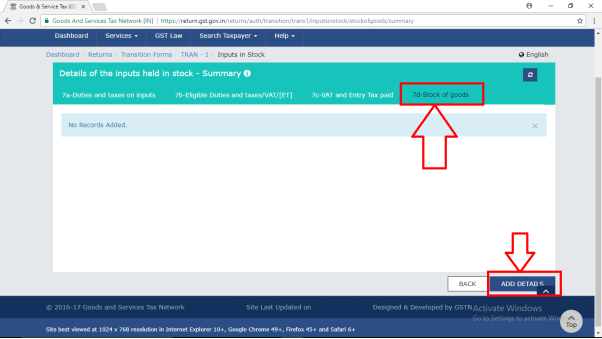
Fig. 1.17 Understanding 7 (d) Stock of Goods in Government Portal
In India there are many states where single point taxation is there. For example, Punjab i.e. In Punjab when any goods is being sold for the first time only then tax is
being charged on it. After that if those goods is being sold for endless times then then the tax is not applicable/charged on it.
So, if the people who are doing purchase of the goods in chain and if they do not have any duty paid document along with them then the benefit can be availed in this case.
And if the person belongs to the Single Point Taxation state then the user needs to fill the details of Number>>Description>>Unit>>Quantity>>Value or Tax Paid and the user will get the credit of it when the user will sell it.
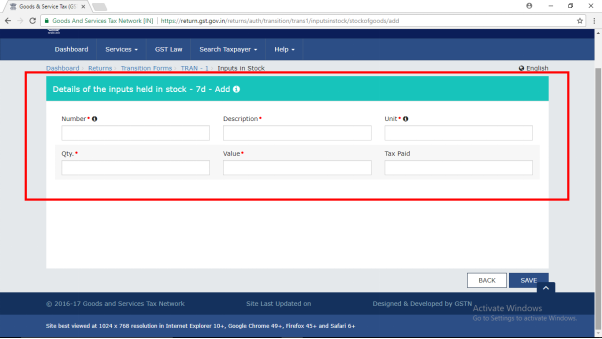
Fig. 1.18 Understanding 7 (d) Stock of Goods in Government Portal
So, at the time of monthly Sale the user will file in the TRAN 2 and 60% or 40% will be available for to the user here.
So, in this way the user can view the HSN wise Stock Statement and fill the details in TRAN 1 through Government Portal.


 -
Marg ERP 9+
-
Marg ERP 9+









